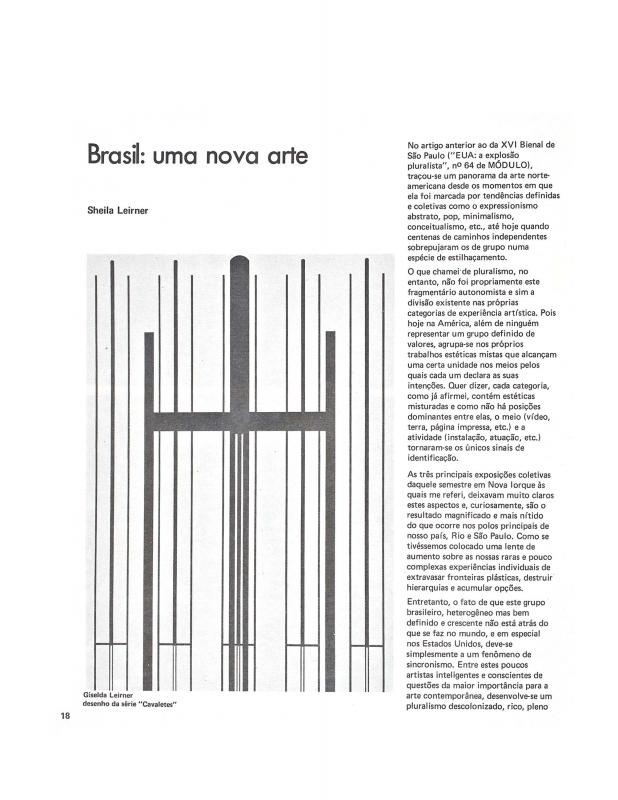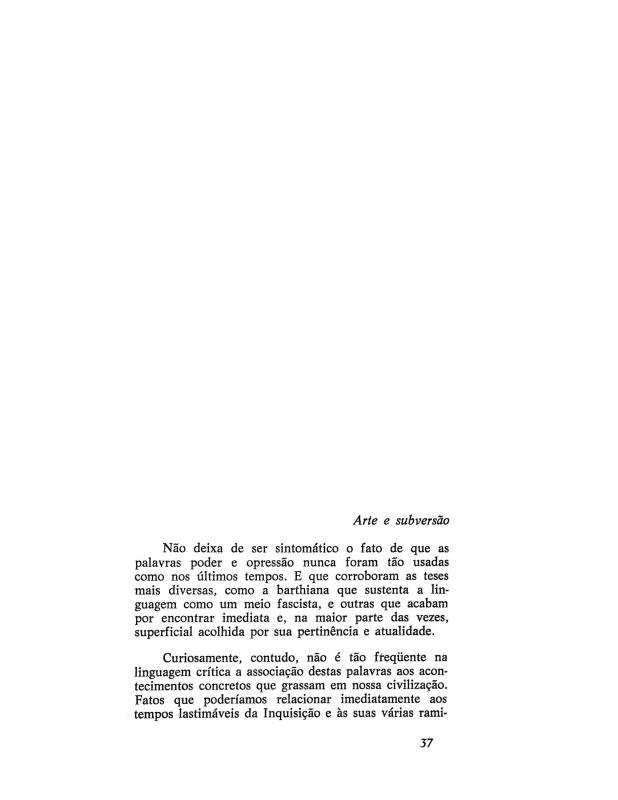The art critic Sheila Leirner wrote this article in the late 1970s, a very complex period in Brazilian art, due to the repressive military government that would remain in power for two decades (1964–85). The text begins with Leirner’s attempt to define the concept of “marginal art,” in which she includes international artists, with a special focus “on our artists.” Hélio Oiticica’s banner, “Seja marginal, seja herói” (1968) [Be Marginal, Be a Hero], proposes precisely what Leirner criticizes: not just turning the artist into a hero, but extending that label to various other social misfits. Regarding the figure of the marginalized man, another of Oiticica’s work becomes significant: “Bólide Caixa 18, Poema Caixa 2, Homenagem a Cara de Cavalo” (1966) [Box Bólide 18, Box Poem 2, Homage to (the drug trafficker) Horse Face]. In the opinion of the writer Celso Favaretto, such an artistic approach would end up featuring “an individual attitude of social nonconformity as the definition of the artist’s own marginality.”
As a journalist and art critic, the French Brazilian Sheila Leirner (b. 1948) was a member of the Conselho de Arte e Cultura da Bienal in 1982 and 1983 and came to be the chief curator of two biennials in that period: the eighteenth (1985) and the nineteenth (1987). After studying sociology of art in France, Leirner became an art critic for the daily newspaper O Estado de S. Paulo in 1975. She published a collection of her essays under the title Arte e seu tempo (São Paulo: Editôra Perspectiva, 1991), a book in which she began to set a priority on what she called “new art.” That was also the year Leirner moved to Paris, where she worked as an arts administrator. She represented the Galerie nationale du Jeu de Paume in Latin America (1993−99) and became a member of the International Association of Art Critics (AICA) (French division). Leirner has contributed to countless journals and supplements in both countries, including Beaux-Arts Magazine, Europe Magazine Littéraire, Revista da USP, and Cadernos de Literatura Brasileira. She was also on the scholarship committee for UNESCO-Aschberg.
Another text relevant in this context is one in which Leirner analyzes the art produced during the 1970s and 1980s in Brazil, in the midst of pluralism in international art, titled “Brasil: uma nova arte” [doc. no. 1110940]. Moreover, in July 1978, the critic wrote the text “Arte e subversão” [doc. no. 1110510], in which she reported that during that very week, the Brazilian artist Lincoln Volpini (b. 1952) had been sentenced to a year in prison by the military government. Volpini stood accused of “issuing highly subversive messages” through his painting Penhor da igualdade (1976) [Guarantee of Equality], an expression that he found among the verses of the Brazilian National Hymn.


